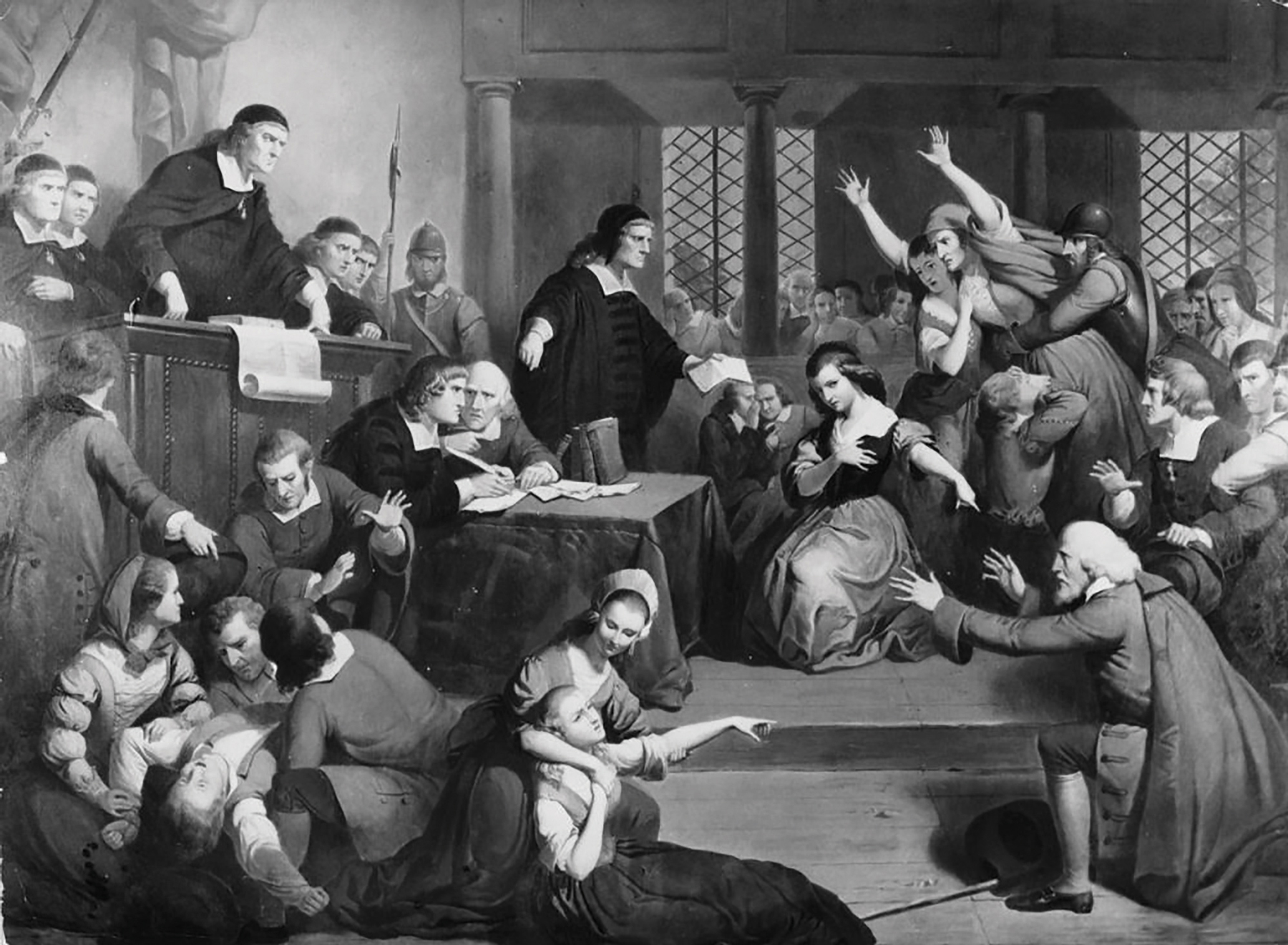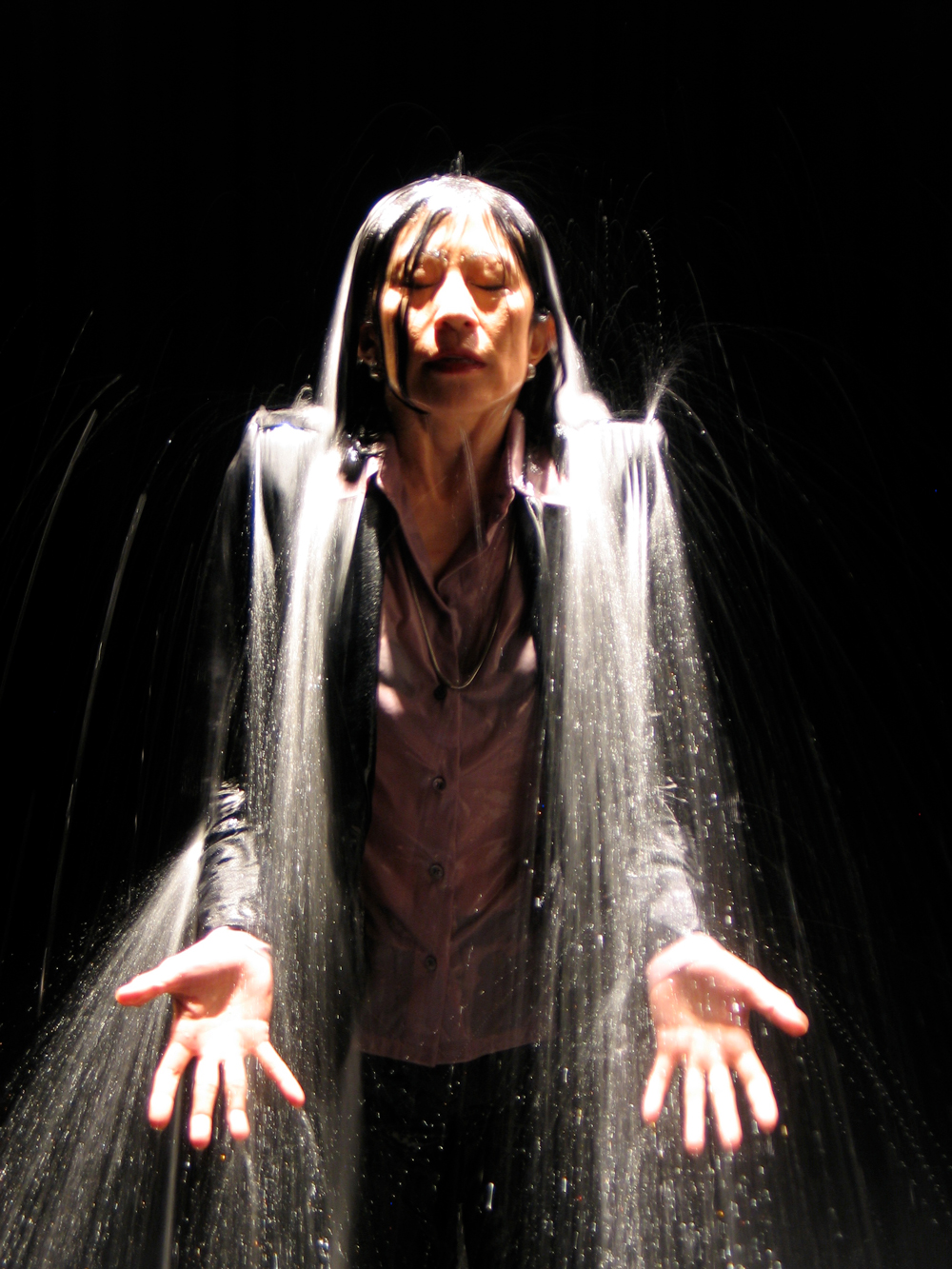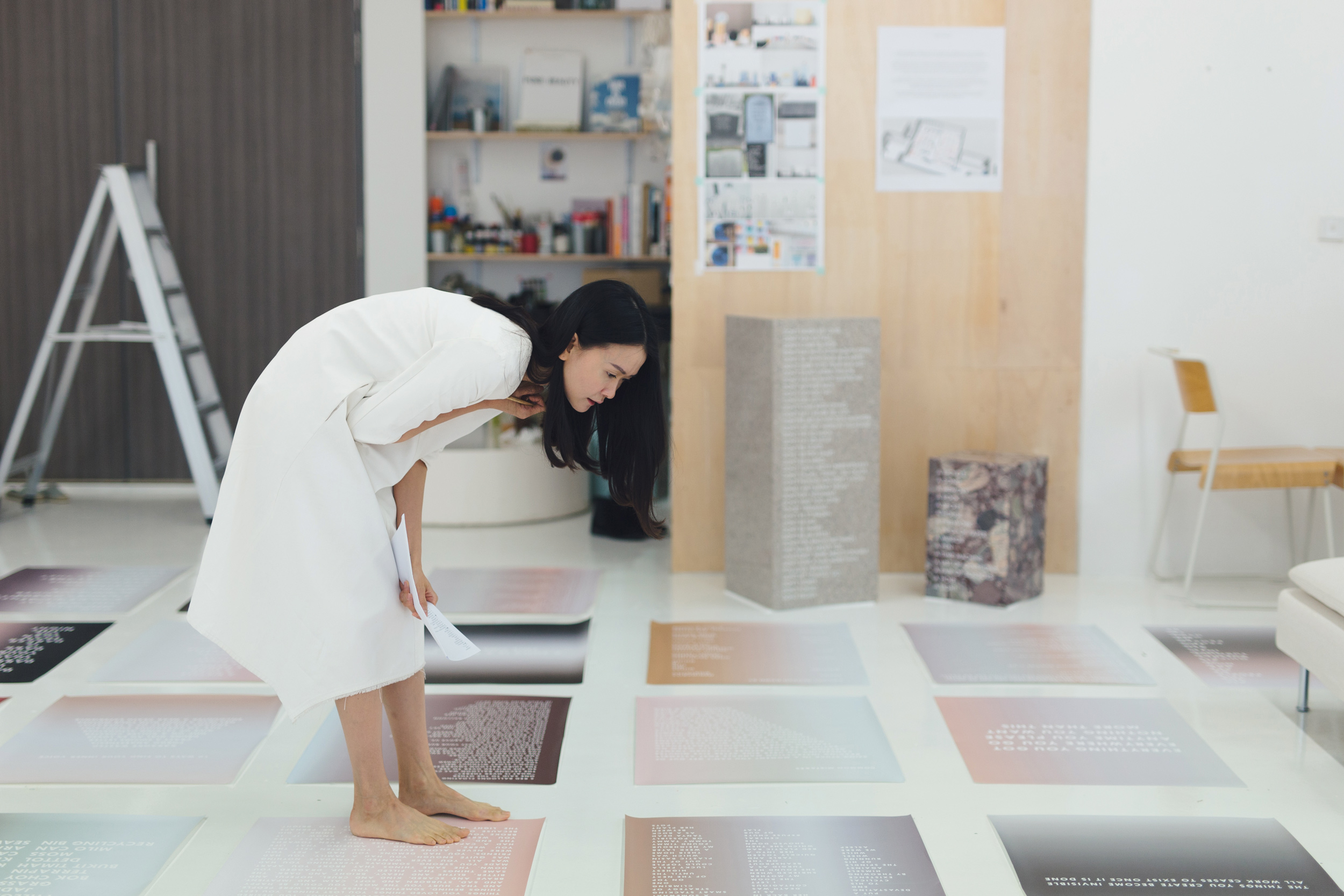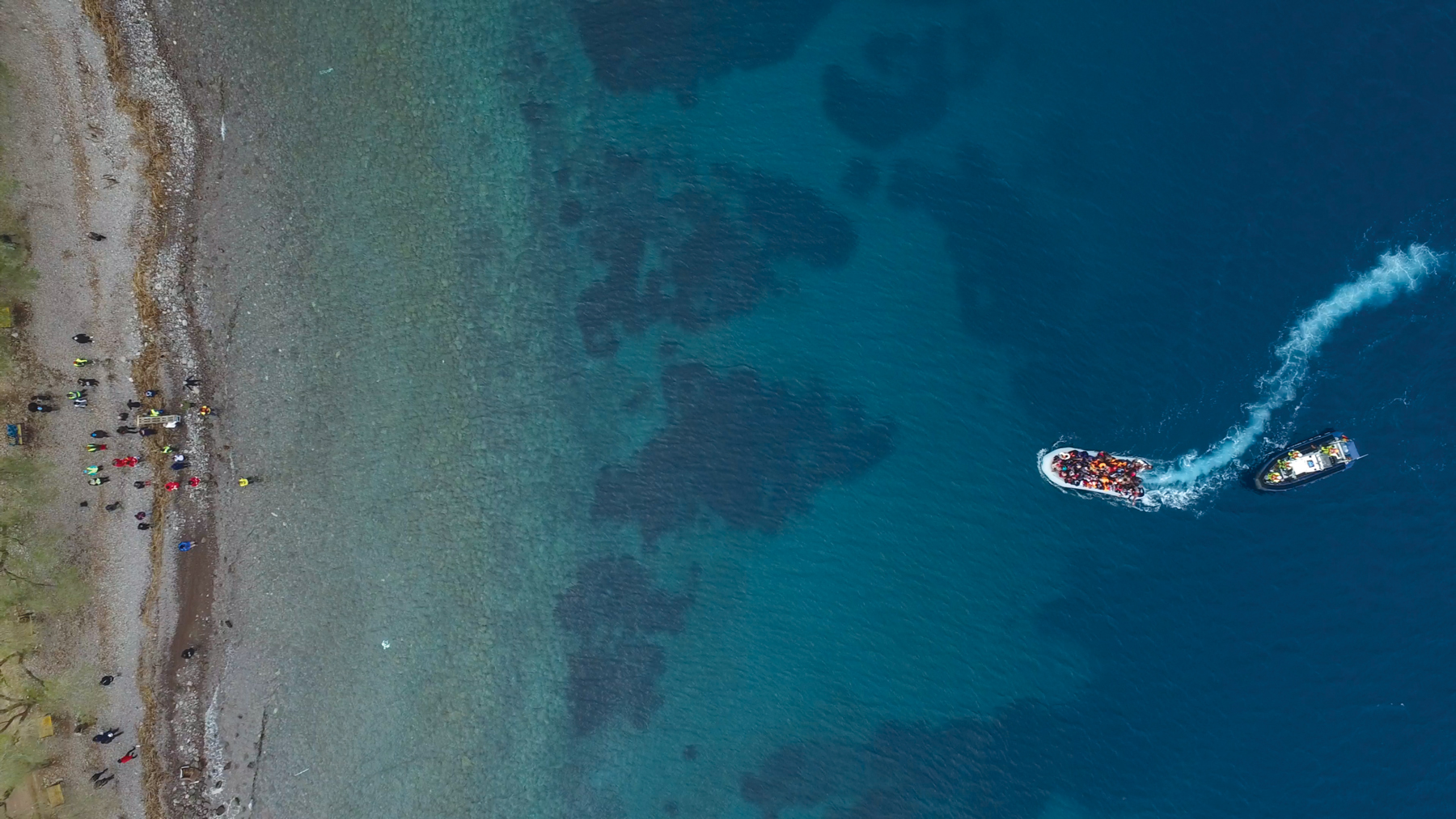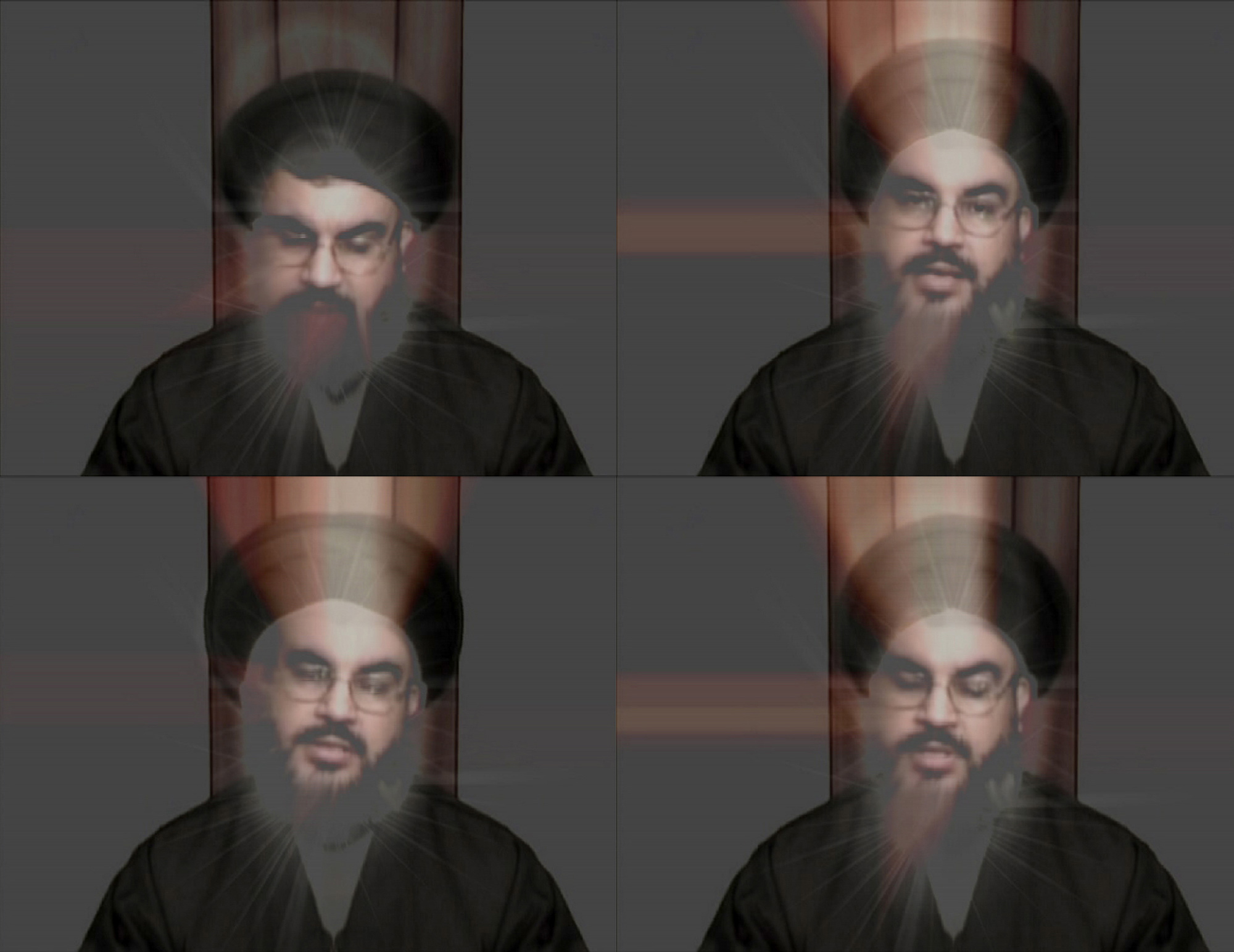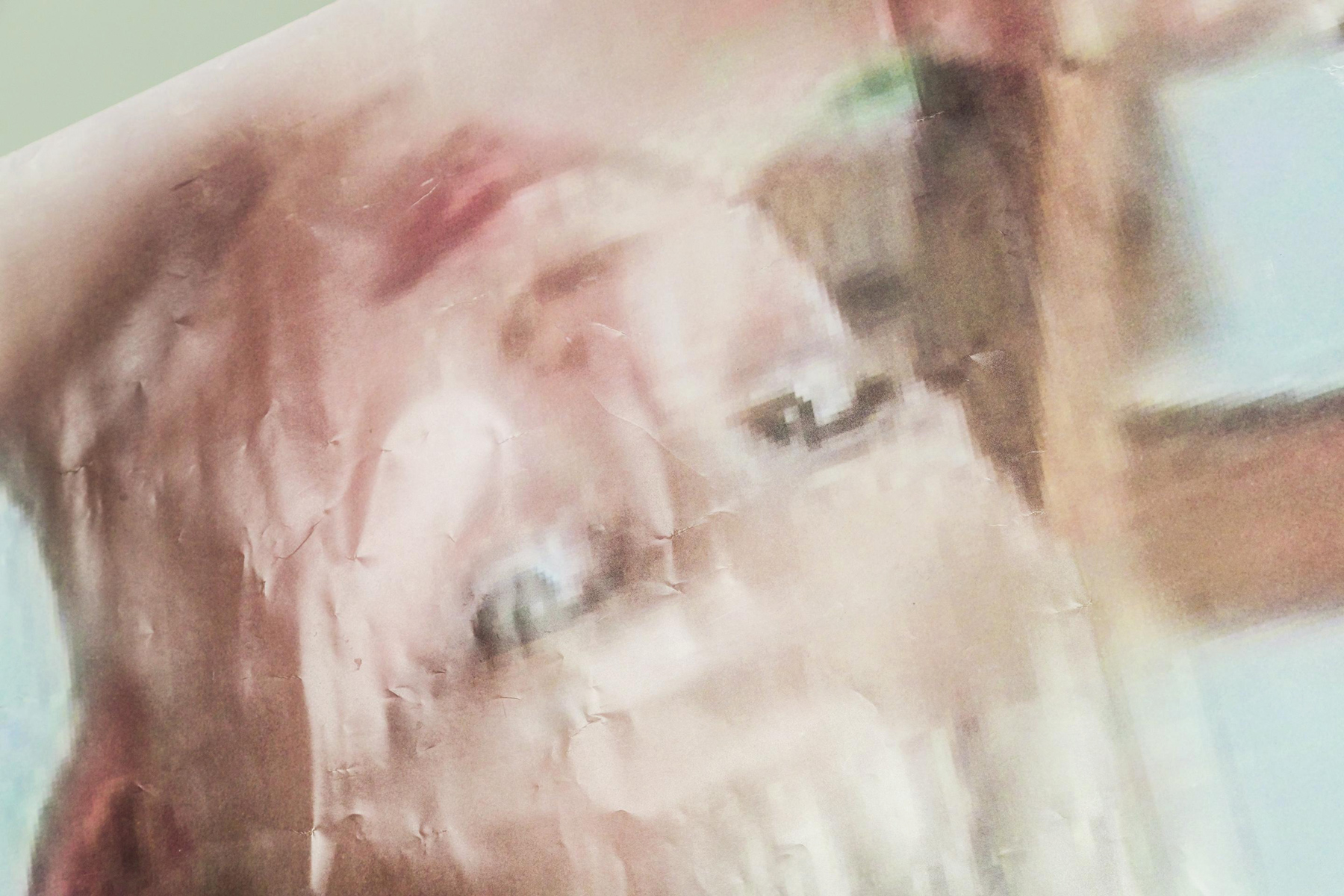"(And by that destiny) to perform an act Whereof what’s past is prologue; what to come, In yours and my discharge."William Shakespeare, The Tempest, Act 2, Scene 1
History gave consequences that we struggle with in our everyday, but it is also the prologue for a self-determined future. Feminism has seethed for decades, and now it grows into a roiling boil, upsetting an age-old narrative of violence and patriarchal oppression. The anger of female resistance leverages upon this history, and each voice raised is another which lends its weight in tipping the scales against a culture of the systematic othering of women.
Irish artist Jesse Jones is one such voice. Her ongoing exhibit, Tremble Tremble, is an unapologetic rejection of centuries of misogynistic colonial dogma, reimagining the narrative of the Irish female body, through mythology, as one of power and defiance instead of subservience to capitalist reproduction. That very subservience, constitutionalised as the 8th Amendment, which dictates the status of the pregnant Irish female body as being equal to the unborn she carries, was the subject of the Republic of Ireland’s recent referendum.
While its origins are interwoven with the referendum, a specific and monumental instance for Irish feminism, Jones continues to evolve the nature of and thus the dialogue elicited by Tremble Tremble, as both response and reconciliation to a shifting socio-political landscape. Through the work, Jones elicits affinity for the broader issues which culminate in the discussion around the Irish female body. Tremble Tremble recently opened where its presence was most charged: at the Project Arts Centre in Dublin, in the wake of Ireland’s successful repeal of the 8th Amendment.
When we first spoke to Jones about Tremble Tremble, the work described a future that Ireland was edging towards. Now, emerging on the other side, the fight is still far from finished. Our discussion with Jones reveals a greater tapestry interweaving Ireland’s post-colonial fight for identity, relentless feminism, the threat of difference Brexit brings, a historiography of conflict, and how contemporary art, including Jones’s work, can posit a discourse. In drawing out these narratives, we start to see how otherness both fractures and unifies, and its impact on the greater question of collective identity. But as Jones reminds us, balance is key. How, and when we choose to draw a line between ‘us’ and ‘them’, will determine what sort of future is in the making.
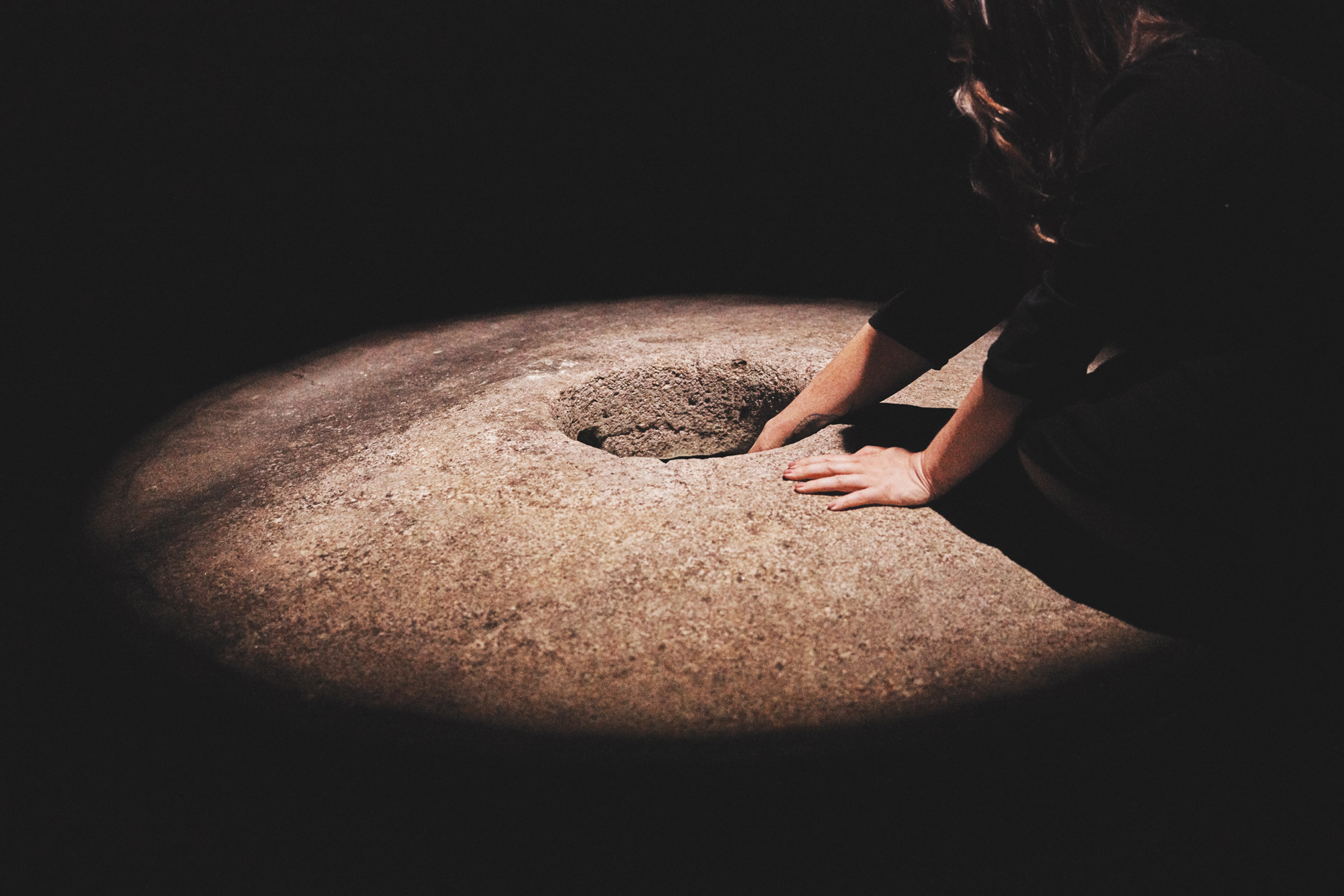
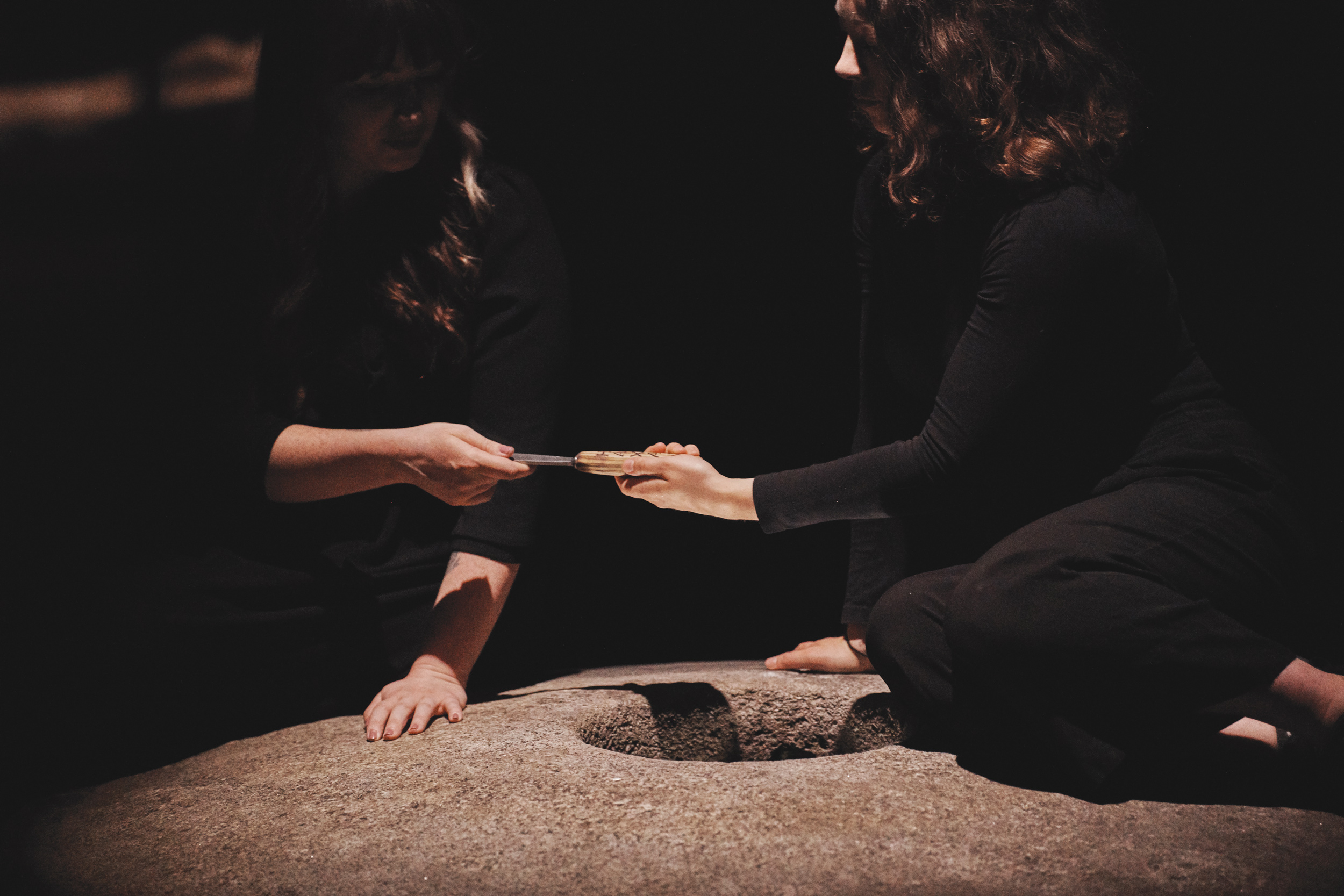
When we first reached out to you, the [8th Amendment] repeal had not occurred.
You mentioned that Tremble Tremble would be showing in Dublin around the time of
the referendum, and that you hoped to include an oracle figure to speak about the
future. I’m curious as to whether that was included? Now this political future has
occurred, how does that narrative aspect of Tremble Tremble evolve?
We opened the Dublin show a week after the referendum, and during that time
leading up to the referendum, everyone was working on the campaign. By the time
we opened the show, repeal had just happened, and everybody was exhausted. The
result was an overwhelming ‘Yes’ to the point where even those who were working
really hard for it were shocked. Across the country—there was no urban-rural divide,
even in places that were historically conservative on so many other issues. A week
later, we opened Tremble Tremble in the Project Arts Centre. The opening was
surprisingly big, we were shocked to see how many people showed up, and how
many kept coming back.
One of the important things about Tremble Tremble is that it was a sound
installation, with performance and sculpture, but it never had a fixed cinematic or film
edit. Every time the work is shown, the sequence and scenography is specifically
calibrated, according to the architectural space, and the specific micro-climate of
how we might see or understand the history of patriarchy in relation to the female
body in that context.
When it was shown in Dublin, I had been developing three other elements. One of
these came from a work I was developing in Singapore, a wall carving that was
etched against the wall, for every time the film sequence would loop. In Dublin, we
built a false wall and put contacts mics behind it, so it gave an element of live sound
in the Dublin event. Another addition was a stone oracle, which was actually a
traditional millstone. The stone is connected metaphorically to the granularity of
detail that’s in the law, and time, and the finesse of bringing something to a very
specific language, which cannot possibly be associated with the law. It is also
connected to everyday life and bread.
I turned that [millstone] into an oracle which would emit smoke, and smoulder at a
certain moment. These elements would enliven the room at a particular scene, to
create an uncanny relationship between what’s on screen or materially changing in
the room. The last additional element was a water supply. One of the women who
asked to work on the project from the beginning, and had been part of the
performance in Venice, Sara O'Rourke, was trained as a homeopath, and we talked
about including something in the project that would give nourishment to the body.
[Sara’s] mother sourced sacred water from her village and we mixed that with
drinking water, with a long copper pipe that would come down through the gallery
ceiling.
There were certain moments in the film sequence where myself and the
other performers would walk towards it, and drink from the well.
These new elements were about allowing a way through these layers of patriarchal
oppression into a new space of collective female, spiritual practice. The practice of
communing together can remake something about the world after. There was a
feeling of aftermath, when the work was shown in Dublin.
I am a fairly optimistic person, I really felt that we were going to repeal the 8th
Amendment. But it was very tense, so I wanted to add another element that would
create this holistic holding of the audience, a kind of cleansing. During the
referendum campaign, all Irish media and institutions were legally obliged to
represent both sides. You’d have a public debate where half is given to rational
arguments about women’s health, in sober realistic terms. And the other half would
be Catholic right-winged fundamentalists, given equal time on platforms because of
this legality. There was a certain atmosphere of misogyny and it was very toxic. With
Tremble Tremble... communally we wanted a bit of a sage cleanse.
And for the gay marriage referendum, we had emphatic celebrations on the street.
There was an a collective community moment of our national self-identification,
which is very significant to who we are as Irish people. When the [8th Amendment]
repeal happened, it was similar, but women were told to not go dancing in the street.
We were told that we were making a quiet revolution. In other words, we were told to
hush up a little bit. So, it was really important for women to have a space, where we
could come together to talk about the process, what we have been through and
achieved, but also what we have endured. We had a series of talks during the
course of the exhibition run, one of which was with me and Olwen Fouéré, and they
were really well attended. People wanted to discuss what had happened in a more
expanded way. We had been in a specific language structure every day, with the
referendum, everything had to be really sober, precise and factual. But actually,
there was something about the unconscious we wanted to unpack too.
Tina Kinsella gave a beautiful talk about unconscious relationships, about what ties
us to the world collectively in relation to art, aesthetics and affect. That becomes a
political thing. She’s developing a theory emerging now from art and culture and
political life, known as the 'Affectosphere'. It is thinking about how in our encounter
with contemporary art, we may become affected to an extent that we can create a
collective agency. That creates the will to transform something about the social
sphere.
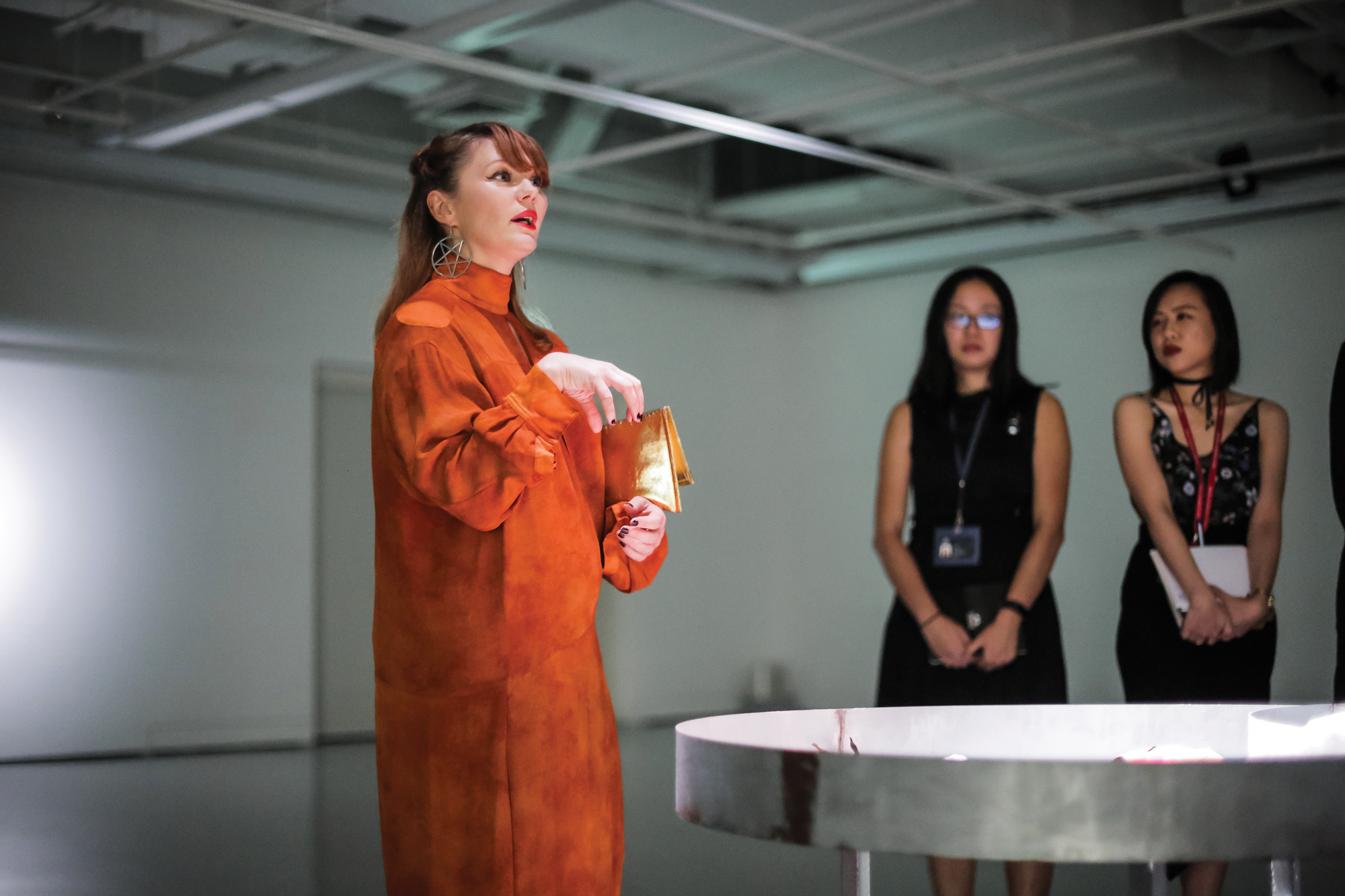
"A physical border will always retrace a scar; it’s not an abstract thing. We’ve seen it before, and we’ve seen what it does to a country."Jesse Jones
And since Tremble Tremble is an evolving work... a lot of it on your part as the artist is addressing and reacting to events. With the recent edition in Dublin, the narrative of the artwork seems to have broadened to include a focus on the domestic.
The work needs live activation, and that is often myself. When I did it in Venice, I stayed in the Biennale for almost a month and a half with the artwork. When I showed it in Dublin, I stayed inside the artwork again, pulling the curtain—people would come into the space, and be like, “Uh-oh, I think that’s Jesse.” You’re so tied to the work that it feels like a domestic, quotidian space. So the work takes on an aspect of everyday life in a real way.
In my research at the moment, I’m thinking about everyday life based on history and politics. I am developing a version of the work that will be in the Guggenheim Bilbao next year. I made a research trip to a place in Basque, a Northern part of Spain called Zugarramurdi. It was incredibly fascinating.
There have been collective spiritual rituals enacted there by women, for many centuries. But it’s also where the first real violence against women, in the witch trials, kicked off in the early 1600s, where they created an archetype for the persecution of women for witchcraft. There’s the Museo de las Brujas there, which is a very interesting restorative justice project. It looks at a history of regional witch trials, as a recalibration of how we might think about othering and misogyny today. When I came back, I kept telling all my friends that we need a restorative justice institution in Ireland, that addresses the brutalisation of women since our counter-Catholic revolution. How do we recalibrate a restoration of subjectivity, through the act of remembering?
I would think that the 8th Amendment is sort of a colonial vestige of Catholic oppression. Does the use of myth and folklore, of the imaginary, in connecting with both the past and the future also defy colonialism?
I guess it’s a sense of having the space to create an alternative imaginary in the present, to create the collective will to get to this other place in the future. This is the feeling around the consequence of our engagement with contemporary art. There’s been an explicit transformation of who we say we are publicly, to ourselves, and the world. And going into that, without knowing what would happen on the other side, making Tremble Tremble was really important for me. It was setting up a way to say, if we could identify with this, if we could come to this space of memory and collective life, and through this figure out this new place. For me, and the community that surrounded the artwork, dealing with this folkore and the affect of the work allowed us to move through to another moment.
What we’re discussing is very much centred in the Republic of Ireland, but through colonial violence and multiple struggles, the ultimate result is a separation between the Republic of Ireland and Northern Ireland. Fundamentally, it’s a long and complex shared history, and there is still common geography. Do you think that Tremble Tremble would be read differently across that border? Especially since Northern Ireland still holds strict laws on reproductive rights, which is a central issue in the artwork? Or does it harken back to a more innate Irish identity born of the land?
In terms of cultural history, a lot of our mythologies are the same. You just mentioned a ‘long and complex’ history, well it’s about to get longer and more complex! Currently there’s this positive moment of feminism and societal transformation, with gay marriage and the [8th Amendment] repeal. The government also just passed a bill to say that you cannot prevent children from entering Catholic schools because they haven’t been baptised.
There’s a societal movement towards thinking about restorative justice, which is not unlike what we did twenty years ago when we created the peace process collectively, between the North and the South [of Ireland]. But now this is in danger as we are moving towards an unknown, Brexit. We are about to go through a violent extractions of bureaucratic stateness from one half of our country. In Northern Ireland, the peace process is held together through a lot of programmes and direct contact with the European Union. When that gets pulled out, we will start to see the fissures on a deeper level than they are now.
Like, Northern Ireland did not vote to leave European Union. They're so reliant on European programmes for education and community development. So much groundwork has been put in by communities and activists, to create this relationship between Ireland and the UK. But if that goes through another rupture... we are talking about a re-bordering of the Republic of Ireland and the North right now, and the line goes down the middle of the country. All bets are off, we really don’t know what’s going to happen in our society.
I speak with optimism and positivity, but I am also very cautious, that there’s a huge unknown that is going to affect us, and it’s outside of the construction of our own reality. When we think about it, we are still in a colonial process if that something that’s happening in the UK can have such a major impact on our lives here and create a sense of uncertainty and trauma.
It would seem that on the ground, the difference between the North and South is created purely through legislative process. And with what you said, about all the action to move Irish society forward, it feels like there is a danger, that because of legal hindrances, Northern Ireland might fall behind.
I suppose it looks like that now because Ireland has passed the referendum, but they haven’t enacted the legislation. You still cannot get an abortion in Ireland. But one thing that happened during the movement for repeal was this incredible solidarity between Northern and Southern Ireland. So many activists in the North, they marched the streets in the Republic of Ireland and knocked on doors to fight for the repeal because we knew this was going to be an all-island movement of women.
About a month ago, there was a big protest where activists from the South went to the North to march alongside them for the repeal of the Offences against the Person Act of 1861, which is one of the reasons why they can’t have access to abortion. Historically, there is a strong connection between the North and South, in terms of the feminist movement, that stands outside these narratives of division. It gives me the hope that we’re able to do this.
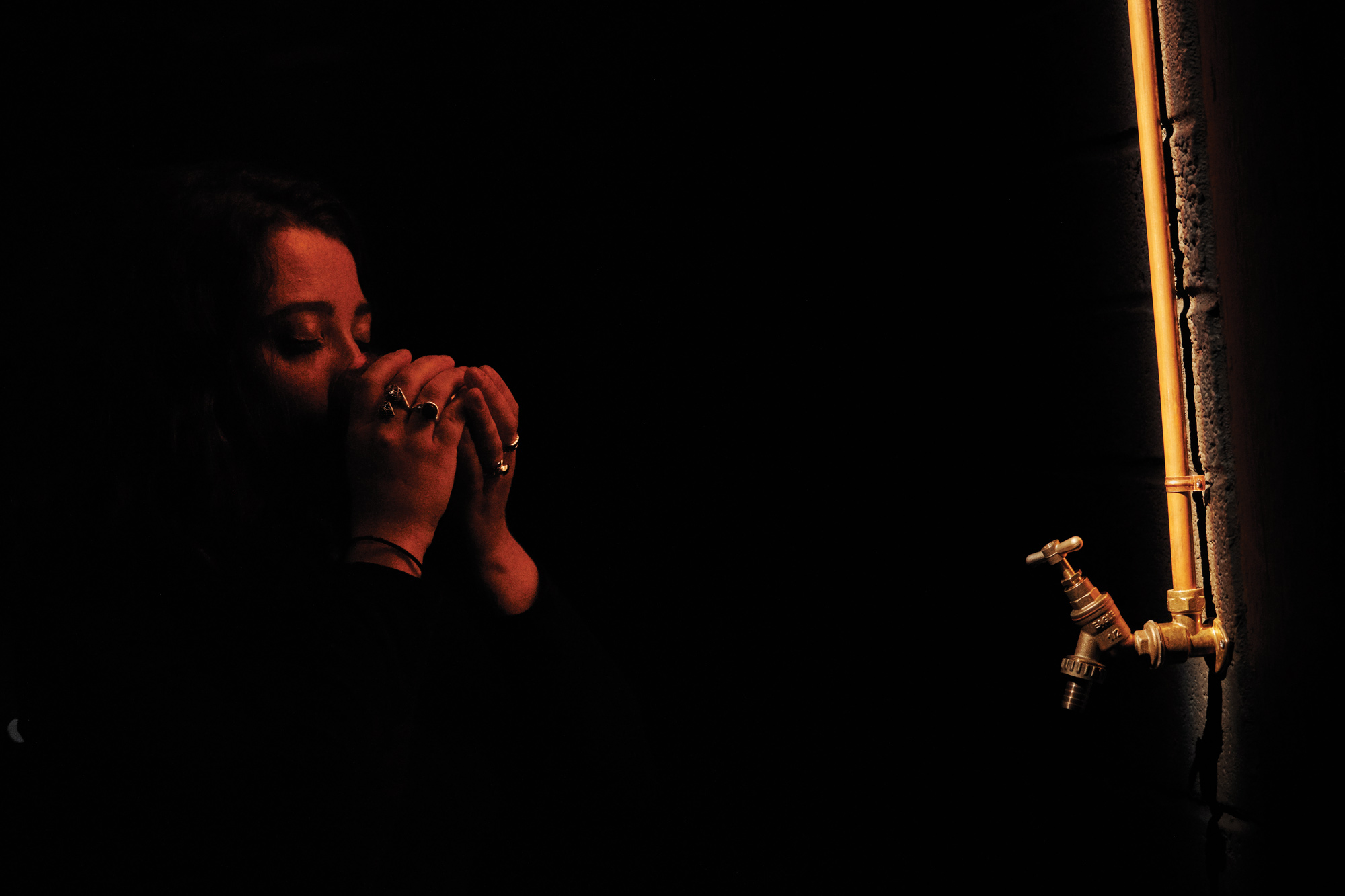
"I suppose I see contemporary art as a place of gathering, of coming together, and of encounter. There are not a lot of places in our culture where this can happen."Jesse Jones
This solidarity reminds me of the use of the female body in Tremble Tremble, where it surpasses the laws of the land and, subsequently, her flesh becomes the site of this new world order.
Yes, and the law has been blatantly broken in Northern Ireland. They had access to abortion pills, if you could get them into a UK address. There was a movement in the North, they were working with Women on Web, which is an online resource to access the abortion pill, to find ways to circumnavigate the law of the European Union. I suppose one of the hopes for the European Union was the creation of better, more equal access to things like abortion, or equal pay for women. But as soon as that gets pulled out from Northern Island, you’re really relying on the British state, to put people’s everyday life and health first. That’s not going to happen, you know?
Now there’s a really conservative unionist party, the Democratic Unionist Party, who is really anti-abortion and anti-gay rights. And they are the ones who are holding up the British government, because Theresa May couldn’t form a government after the last election; she had to have the DUP come on board, so she could have the numbers. We’re looking at the most conservative party in Northern Ireland having a massive influence in UK politics, and that’s a frightening thing.
So they effectively represents Northern Ireland in the UK, but don’t represent a large part of people who identify as Irish. What sort of impact does that have moving forward?
I suppose, because they only represent a minority of Northern Ireland, it is a very alienating thing to have such a extreme, sectarian, right-wing political party have so much say over your existence. It’s not too far away from how people might feel living in Trump’s America. It’s definitely something we are saddened to see pop up across the world, this extreme polarisation of political positions. In many ways, Northern Ireland has been doing it long enough to know how to hold onto something in the middle. Whereas the political experiment Northern Ireland turned into, with partition and post-colonialism, has been replicated all over the world. The treaty to divide Ireland was a kind of test for the process of 20th century de-colonialisation. People talk about Northern Ireland like it’s a special place, but actually it is a testing ground for so many different parts of the world.
Perhaps because I’m not Irish, it seems unique because the culture and the identity is still cohesive, versus something like North and South Korea, where everything is completely different, from the politics to heritage.
Yes, it is completely different to that. I think the peace process really has to be emphasised as the thing that creates the space for that, that movement away from violence and deeply violent othering. My anxiety is that the peace process relied on very tacit, political social structures, that were collated by a deep political will from the entire community, to move to a place that was not another generation of violence. And the restoration of justice. But the administration of that relies on the structures of the EU, and Northern/Southern and UK collaboration. Without that, it is hard to know if the peace process can hold together.
I’m being cautious, because it’s something we need to take care of at the moment. There has to be a lot of political will from both sides, particularly from the UK, in that they don’t allow a re-bordering of Ireland. A physical border will always retrace a scar; it’s not an abstract thing. We’ve seen it before, and we’ve seen what it does to a country. It’s the deepest form of othering that’s possible, as soon as you put a mark in the ground and say this is Ireland, and this is the UK.
Right, because this has happened before, with the peace walls between Catholic and Protestant communities in Northern Ireland. That’s a tangible reminder.
Yes, and Northern Ireland has some of the nicest, soundest people you can ever meet. But they have been brutalised by this pull between two states, and two identities. The process of Brexit is going to be traumatic for Northern Ireland, but it could also present something new in terms of our understanding, and what we want to be aligned to.
You also mentioned earlier that contemporary art could be an alternative approach to this sort of fight?
I suppose I see contemporary art as a place of gathering, of coming together, and of encounter. There are not a lot of places in our culture where this can happen. One thing about contemporary art in Ireland: it’s always free to access, it’s always happening inside or outside an institution. It takes so many different types of forms, it requires the body differently each time. Because of this transformative, constantly changing form, it allows for a way of shifting our encounter with collective life. And I feel this is something we don’t really get in other places, such as mass media or education. It’s usually a didactic instruction: this is what you need to know in order to reproduce the world through capitalism and the economy. So [contemporary art] exists in a way that allows us to encounter ourselves and each other and culture.
But it’s also a fucking nightmare! With the biennales and the art markets, with this constant commodification of ideas when there is a financial repercussion to artistic research. It is by no means perfect, but I think it has potential. In the same way that theatre has potential, you know?

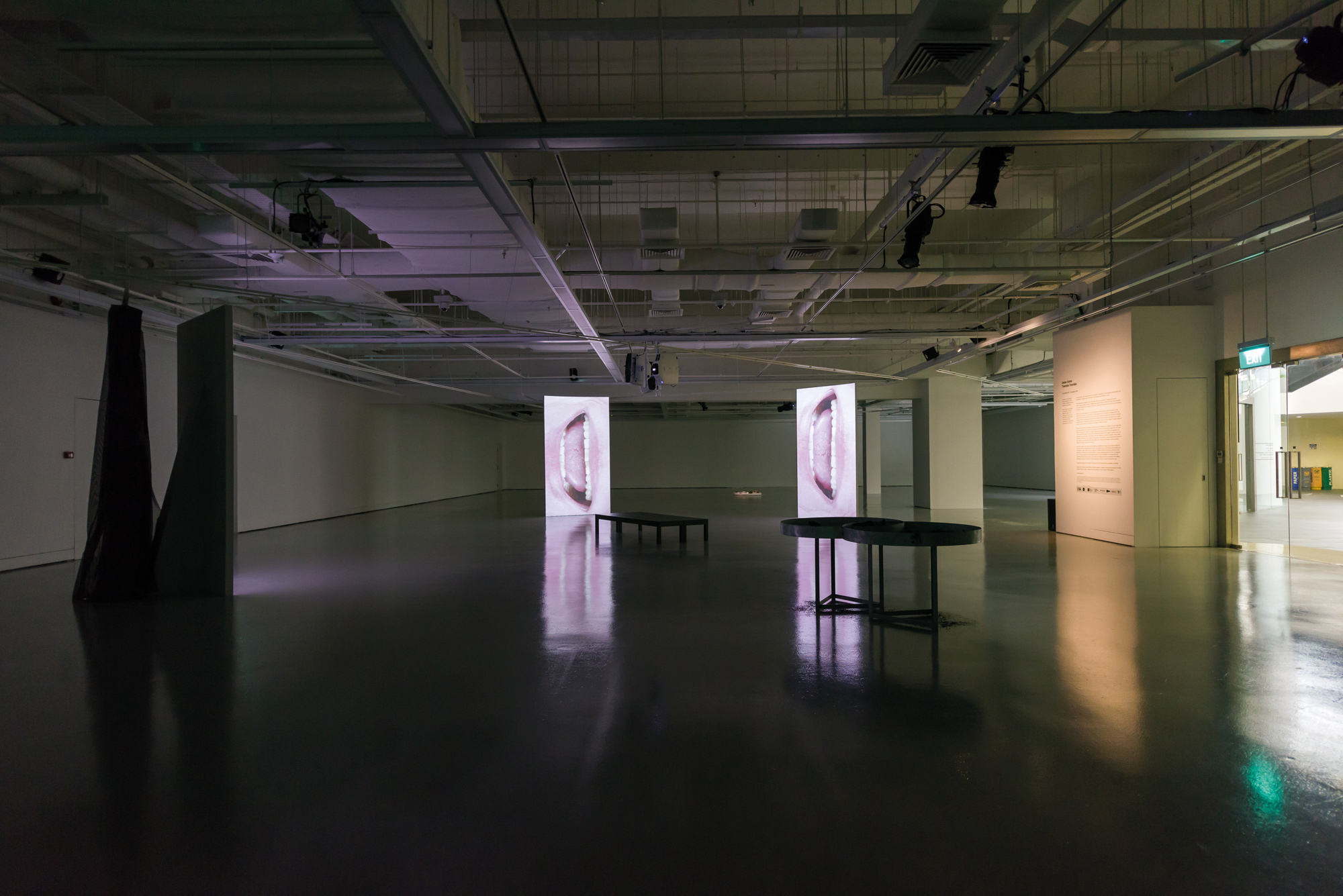
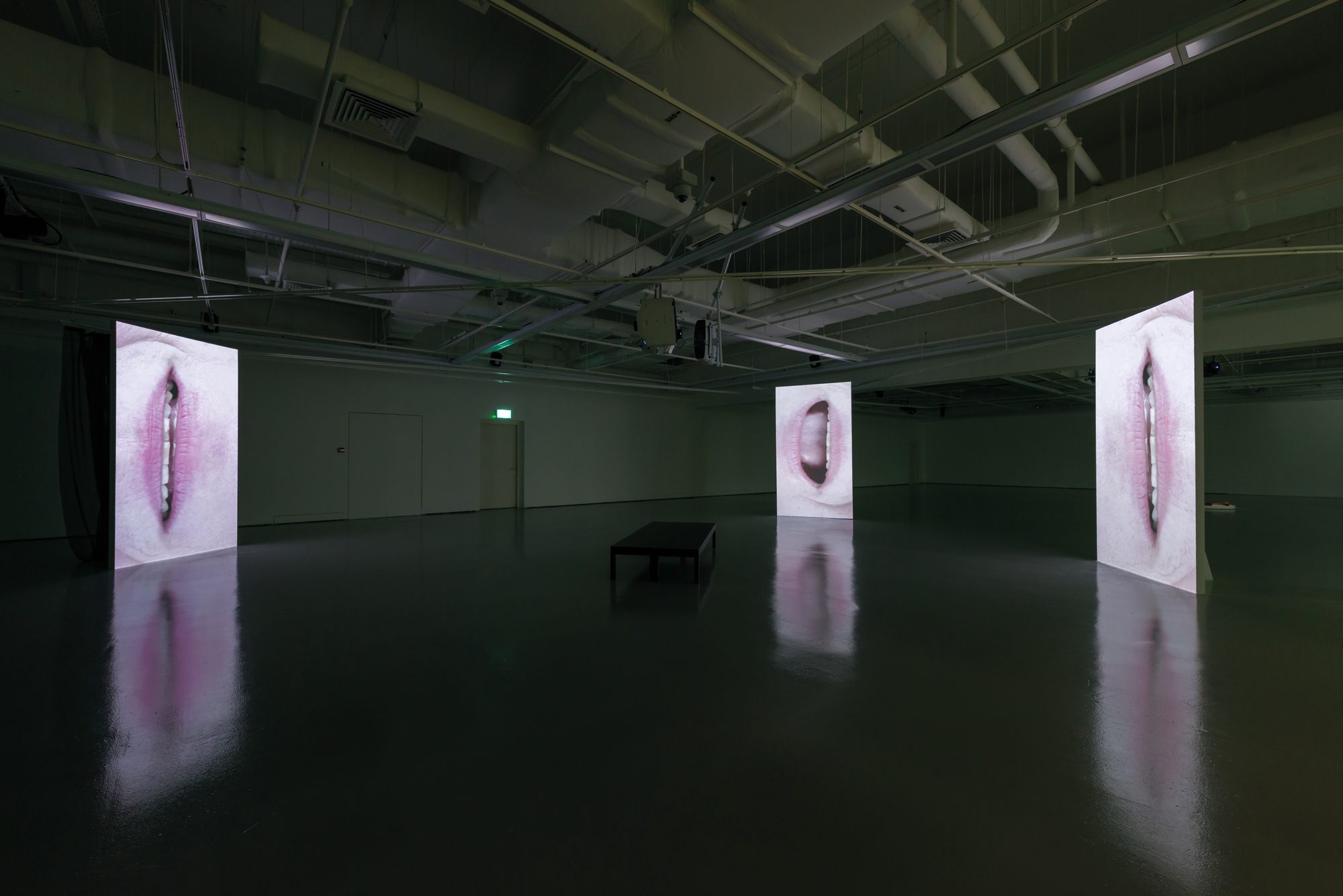
Well, you represented Ireland at the Venice Biennale, which is a really big thing,
especially with such a political artwork. I can’t imagine many places giving such an
opportunity. Especially when you look at say, Ai Weiwei, who represented China and
was subsequently kicked out for dissension.
Absolutely, and I think that’s a very interesting situation; in the Arts Council Ireland
mission statement, they have a phrase about keeping an arm’s length to the artistic
practice, even though they fund it. This approach is interesting, because a lot of
artists then make work which criticise aspects of government policy, or society. So
governmental funding can be used to make art which undermines policy or practices.
I think it’s unique; but I hope it’s not.
But Ireland’s in no way some sort of utopia for artistic autonomy. We’re the third
worst publicly funded EU country in the arts. But the funding we do get, there’s
obviously been a lot of criticism about an unconscious gender bias. If you look at the
statistics, there’s a huge disparity between men and women accessing funding over
the last ten years. So they’re trying to recalibrate that, with film funding or
programmes deliberately bespoke for women artists or filmmakers. I think that the
government here doesn’t think the arts have a huge impact. So I think there’s a lot of
freedom in this assumption that we don’t have a lot of agency.
That’s an interesting point of view, because to me, the arts are always the first thing I
think about when creating dialogue about society and culture.
Earlier on, I was talking about the referendum, and how you have to create balance.
Bizarrely, the same institution here in Ireland, Project Arts Centre, that
commissioned and exhibited Tremble Tremble, were forced to remove a mural on
their wall that said ‘Repeal’. Very controversially, they removed it because they were
threatened with the removal of their charity status and funding, because they were
being too biased in the campaign. Cut to a week later, the referendum is over, and
we’re able to open Tremble Tremble.
The timeline of holding that space of equilibrium in terms of what voices could be
articulated had expired. It was really tricky to even send out press releases during
the referendum, like it wasn’t even an unencumbered situation. When you make
artistic work in the public sphere that has a political position, the people who
disagree with you will come after you. Especially as a woman, it’s not something that
people just allow you to get on [with]. There’s always someone who doesn’t want you
to have that power.
